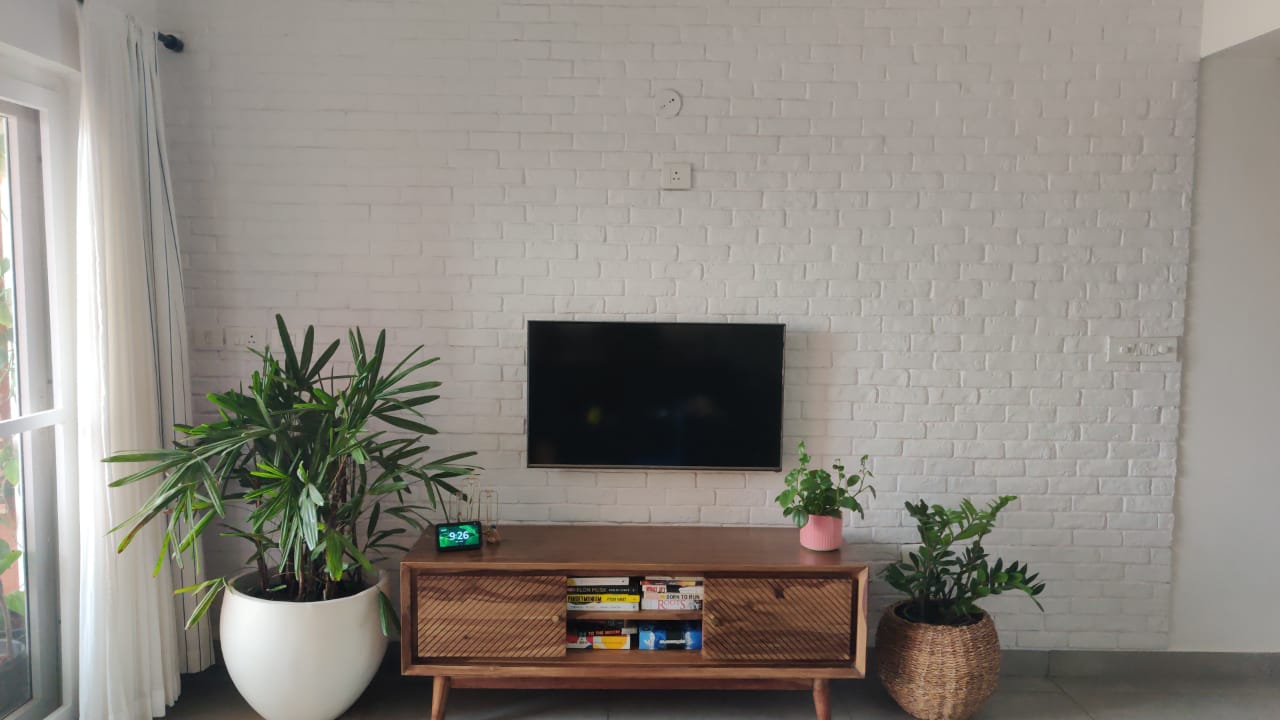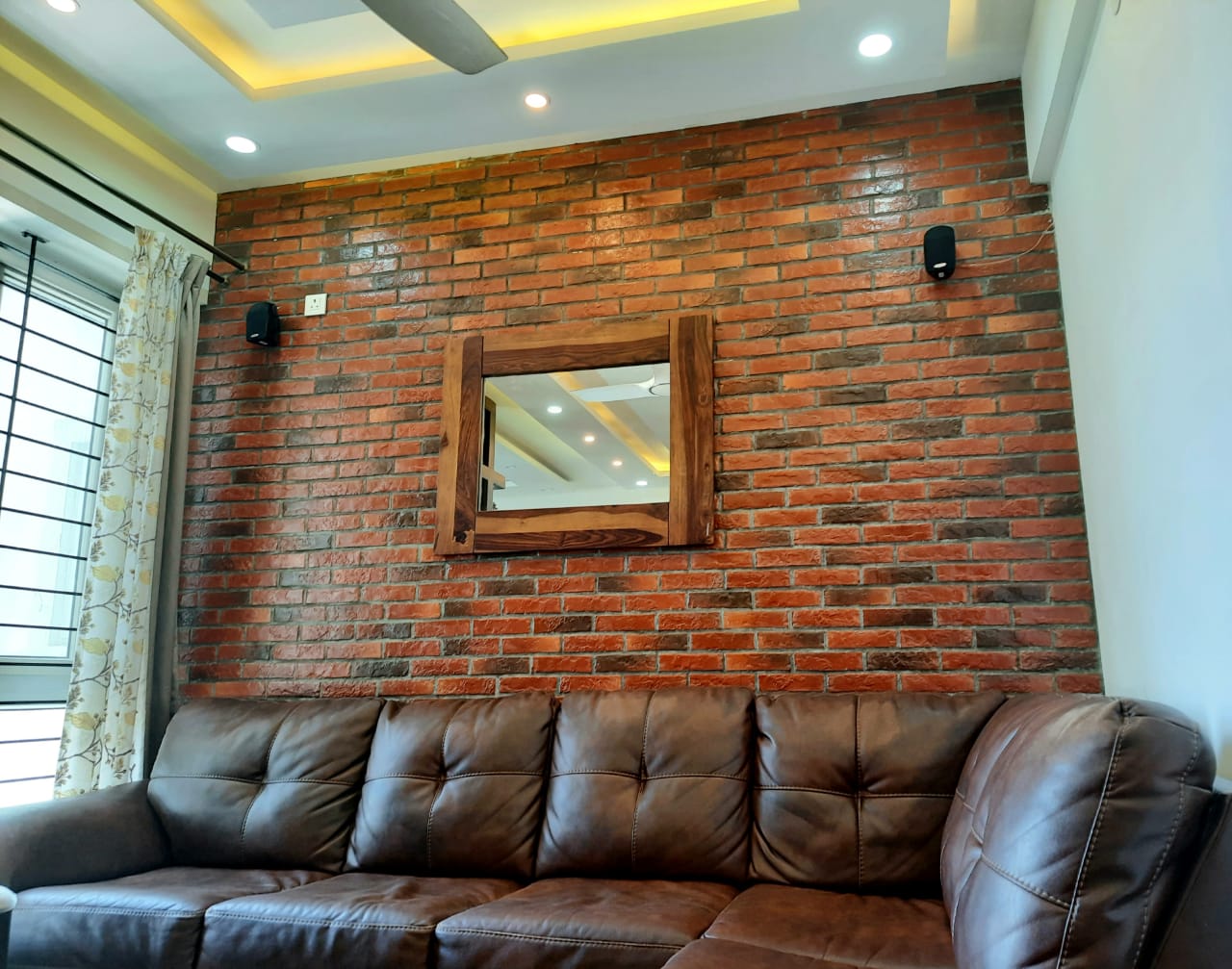Brick Cladding : How You Can Embrace This Vintage Beauty In Your Decor
Vintage styles have a special place in Indian homes. And mind you, it can bring just as much joy of creating something unique that's what makes brick cladding tiles such a versatile choice for Indian homes.
By Naina

Sat , Jul 20 , 2024

10 min read
Vintage styles have a special place in Indian homes. And mind you, it can bring just as much joy of creating something unique that's what makes brick cladding tiles such a versatile choice for Indian homes. MyTyles curates stunning styles, exceptional designs from around the world just for you. From classics to red hot trendy pieces, the world is now your oyster! Shop online at MyTyles.com .
Brick Cladding vs Brick Tile
Whenever we mention bricks, there are two major options that show up. First are these ceramic/vitrified brick cladding tiles. These are digitally printed and can be used in balconies, corridors, even exteriors of your home. The other kind are these brick wall cladding. These are called brick sized, individual pieces that measure 2.5 x 10 inches. They are typically much thicker than regular tiles. This is 12 mm. Can you imagine the thermal insulation? In fact, some Japanese lores suggest brick cladding also has fire resistance properties!
You might have seen these at your favourite cafe or your favourite movie for sure. Since pottery and firing techniques originated in Asia, you’ll find the greatest diversity in styles and options in brick cladding from India, Sri Lanka, Japan, China, and Korea. The organic textures make them a true delight.
Please note that brick cladding being such a rustic, handcrafted material, the stocks for most designs are limited. You’ll also find brick cladding veneers and wallpapers, but none of them will deliver the real feel of exposed brick.
Types of Brick Cladding
Brick cladding can be either clay or culture bricks. Culture brick cladding is made with pigmented cement mix, or as we call it concrete, which is then poured in mould. The pigment is distributed throughout the body of each tile. When you have to seal the corners, say a column or a free edge, the edges have a consistent finish.
The second option is clay brick cladding. This is pure clay that is baked and fired. The outer finish that you see, the unevenness, the faint distressing, the darkened blotches… the generous rustic details along the edges. These are spontaneous results from the process.
Designs in Brick Cladding
The color of brick cladding plays such an important part in evoking the right vibe. And shhh… but that is the real cheat code to getting that distinguished effect.
Red Brick Cladding
Hues of red, including terracotta, auburn, and sharp carmines, make red brick cladding a true delight. These red tones add a dash of vibrancy to your interiors. You can pair it with white or gray grout lines to bring a mesmerizing touch to your spaces.
.jpg)
White Brick Cladding
White brick cladding is such a modern, innovative flair to it. The crisp white tones are complemented by an assortment of colours. You can even relay the vibe from mid-century modern to stunning boho chic within minutes.

Burn Effect Brick Cladding
Browns and grey accents develop very naturally as a part of the baking process. This is called a burn effect. These seemingly imperfect touches tend to contribute to the visual impact. They can compliment grand decor schemes quite easily. And therefore, you can assure greater flexibility.

Use of Brick Cladding
Brick cladding can be used in café/restaurants, gyms, exteriors, balconies and even lobbies of commercial spaces. In terms of indoor use, you’ll see them in living spaces. This includes your dining spaces, indoor lounge, balconies, TV units, outdoor lounges and backyards, front porch and main entryways… You can even use them in exteriors and for elevation. The calming, soothing ambience can be attributed to the insulating properties of brick cladding. MyTyles has some top-notch, creative ways to utilize brick cladding on their inspiration gallery.
Patterns in Brick Cladding
The most common pattern in brick cladding is this running bond layout. However, if you are feeling adventurous, you can experiment with stacked, vertical, and even herringbone layouts. Very similar to subway tiles that way.
Installation of Brick Cladding
The installation process is labor intensive. Each brick must be laid with precision and the edges must be sealed properly. Brick cladding is always installed on a rough, plastered wall. There should be no paint, no putty, no similar materials, make it rough… this ensures maximum gripping. Typically, 7-star adhesive is recommended on a concrete wall. You can also install brick cladding on ply, gypsum wall, or metal wall. For these materials, depending on the surface, the grade of adhesive will vary. The grout line can vary between 8-10 mm. That is not an excuse to skimp on the use of spacers. You’ll find these 8-10 mm spacers that are exclusively used for brick cladding. They’ll also ensure instant leveling and fine tune the symmetry for an appealing look. Based on the grout width, the quantity of bricks required will vary. Please ensure that you take the grout width into account to verify the number of pieces required. For grout material, grey or white tile adhesives are used. Masking tape is carefully laid on each brick and the gap is sealed. This prevents staining, discolouration or any changes in the colour resulting from spillage. The result is always worth the effort you undertake.
Maintenance of Brick Cladding
Keep it simple, silly! Dust off the excess debris with a soft cloth, wipe as and when needed. You can even use a vacuum. Rest assured, when installed properly, the maintenance is quite minimal in nature.
FAQs on Brick Cladding
What is the average budget for brick cladding?
Answer - The average charges for brick cladding can range from ₹150-200 per square feet. Rates may vary based on your choice of design. Clay brick cladding is typically more expensive than culture brick cladding.
What are some popular shades for brick cladding?
Answer - Terracotta red and white are the most common choices for brick cladding. However, burn effects and clay brick cladding are also gaining popularity.
Where can I use brick cladding?
Answer - You can use brick cladding anywhere from interior to semi-outdoor and outdoor accents and full-fledged details.
Will White brick cladding get dirty?
Yes, however… you can paint and repaint white brick cladding if you see signs of discolouration from improper maintenance.
Is Brick Cladding difficult to install?
The installation process requires skilled labour. But the ease of maintenance and the glamour pretty much makes up for it.
Is Brick Cladding difficult to install and maintain?
No, brick cladding is not difficult to maintain. Simply follow the process and the desired result is all yours.
Do I need to apply sealer or polish?
For cultured bricks, No need of any kind of sealer. But For clay bricks, yes you can use sealer. It can add the right amount of shine through its wet look and also make it stain proof.
